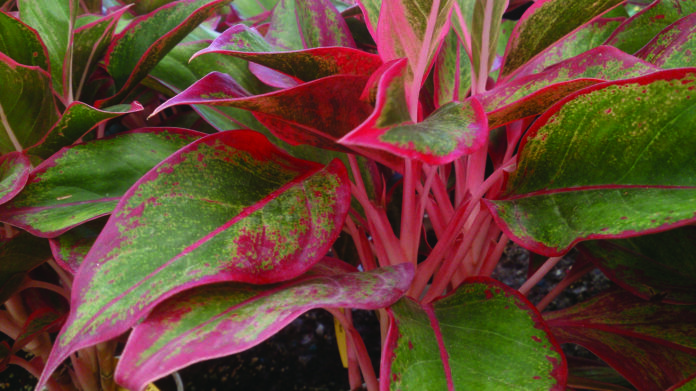
by Erl Svendsen
As I look out at leafless trees and snow, I am not the least surprised that houseplants have been popular for centuries. And it doesn’t take snow on the ground to want to bring a little natural colour into our homes.
No plant ever developed naturally to survive in a home. Compared to much of the outside world, houses are dark, dry and occasionally drafty. And rarely does it rain in your house unless the upstairs bathtub overflows. Thus, potted plants rely on a human to supply all essential care and nutrients. Fortunately, many plants are easily grown indoors.
Water: Wait until the top inch of soil is dry to the touch; then water until it comes out at the bottom of the pot. Never allow the pot to sit in water.
Fertilizer: Fertilize once or twice a month at half-strength according to the label instructions. 20-20-20 is a good general houseplant fertilizer. If you’re like me, and put off fertilizing (meaning to do it tomorrow or on the weekend), use a slow-release type specifically made for houseplants and apply it according to label directions, usually every 4, 6, 9 or 12 months, depending on the formulation.
Temperature: Keep plants away from furnace vents. Not only is forced air too hot in winter (and too cold in summer if you have air-conditioning), it is also very drying. In winter, keep plants away from the cold drafts of open doors and windows.
Light: Keep your houseplants out of a direct south exposure (although a few feet away is okay). West and east exposures are fine year-round. Place plants within inches of the glass to ensure sufficient light in a north window. But take care not trap them between the window and the curtains in winter. Containers for plants that are to be in direct sun should never be made of a dark material; the roots may literally cook to death.
Truly tough plants
The appropriately named cast-iron plant (Aspidistra elatior) was commonplace in Victorian parlours, able to survive low light and with little water. While the species has dark green leathery leaves, there are varieties with variegated and spotted foliage. Keep on the dry side and slightly pot-bound. Never use leaf-shine.
The mother-in-law-tongue or snake plant (Sansevieria trifasciata) has thick, long, narrow, dark green, upright leaves that come to a sharp point and can grow up to four feet. Dwarf and variegated varieties exist. It can survive neglect but should be given adequate light (within 2-3 feet of an east or west window; within 4-6 feet of a south window). Keep out of cold drafts and do not over-water. Prefers to be pot-bound.
The Chinese evergreen (Aglaonema sp.) resembles the cast-iron plant in many ways and may even be as tough. The leaves are generally a pale green with a silvery splotched pattern, and are closely attached to one another on a short stem. Numerous varieties exist, differing mainly in leaf pattern including ones with dark pink/red leaf edge. They thrive at room temperature and indirect light. Do not over-water.
The amaryllis (Hippeastrum sp.) does not usually make the list of tough plants; however, if you have a south exposure and don’t care if it flowers exactly at Christmas, this is a very tolerant plant. Long, narrow, light green leaves arise from a bulb and usually last 6-8 months. Remove them with a gentle tug as they yellow. Triggered by daylength, they flower in the fall and again in the spring. Repot your amaryllis when it breaks its pot. Keep it on the dry and warm side.
Erl gardens in Saskatoon and recently started tweeting about it @ErlSv.
This column is provided courtesy of the Saskatchewan Perennial Society (SPS; www.saskperennial.ca; hortscene@yahoo.com; www.facebook.com/saskperennial). Check out our Bulletin Board or Calendar for upcoming garden information sessions, workshops, tours and other events.

